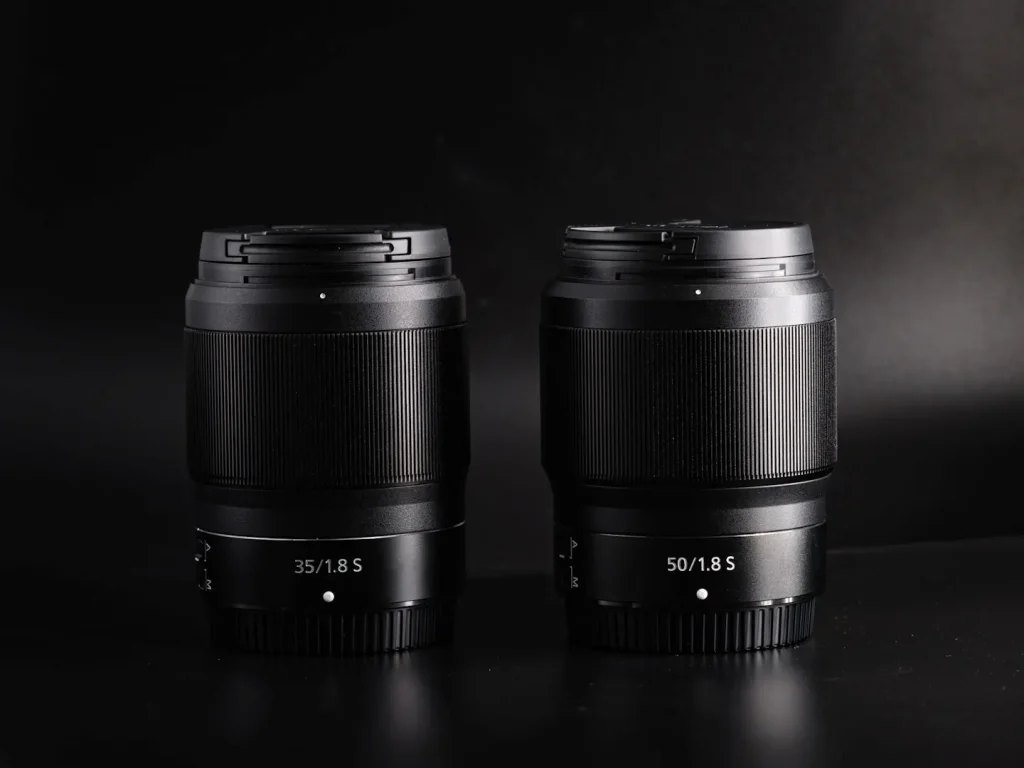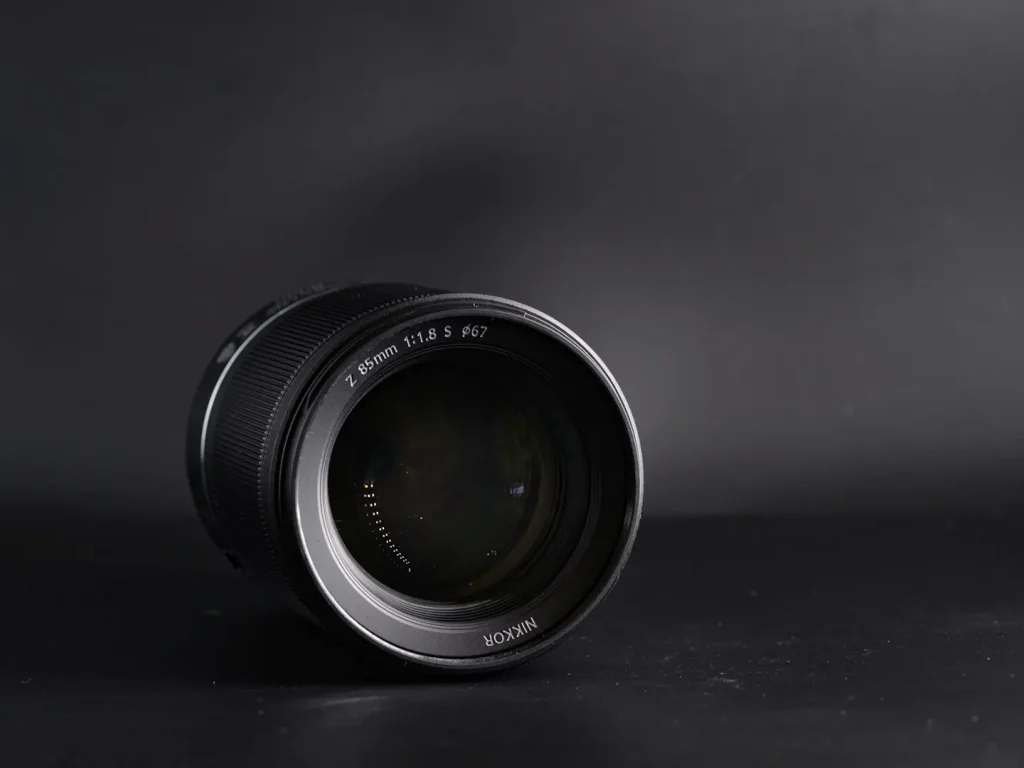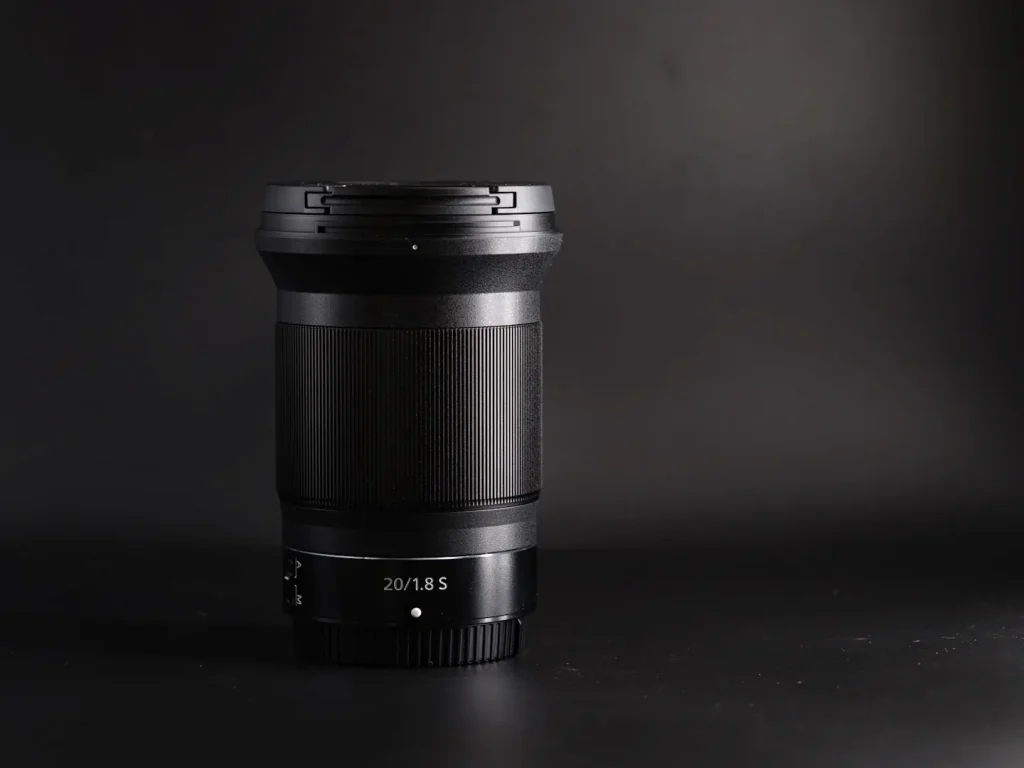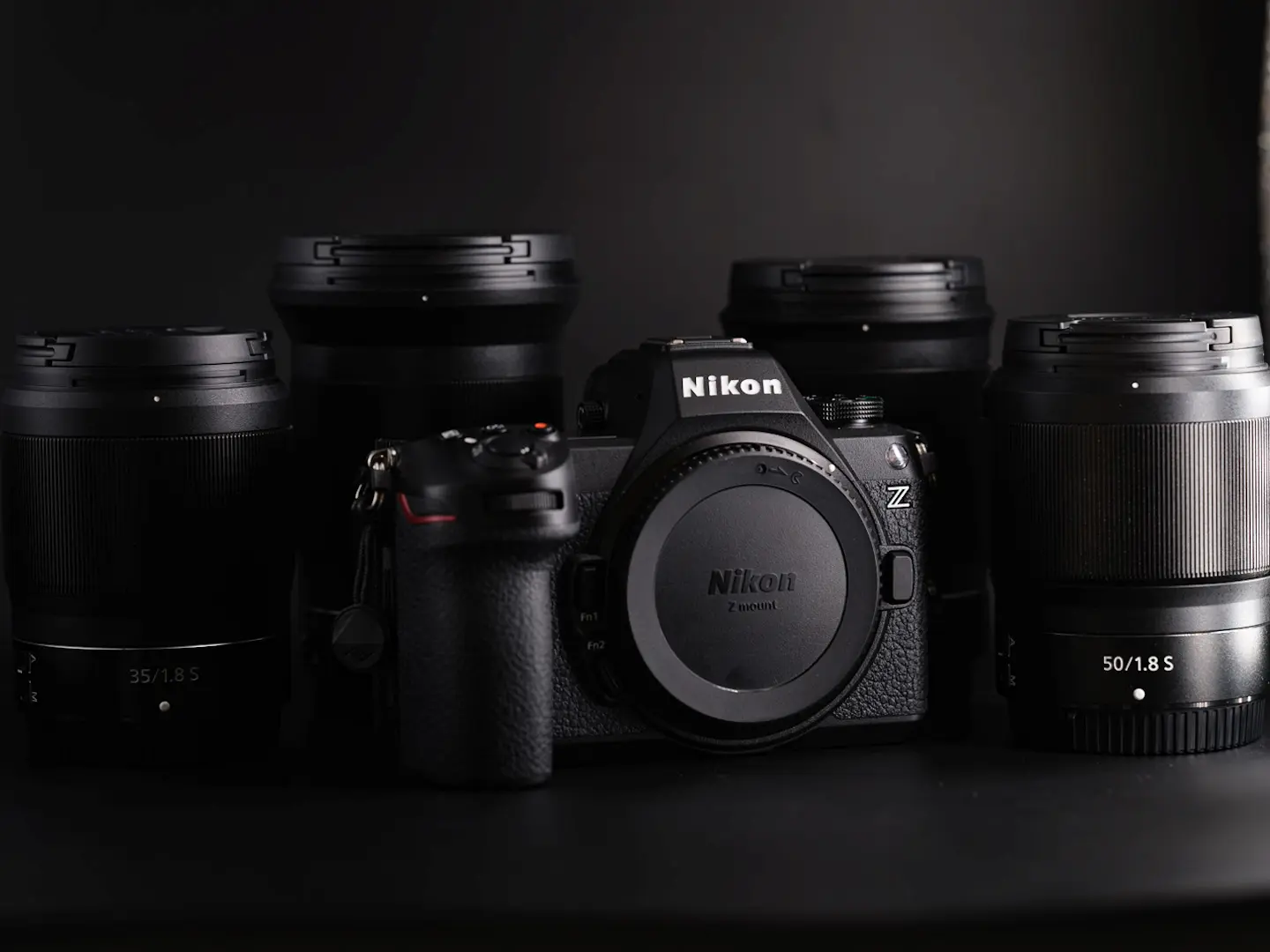So you’ve got your Z6 III — which I think is Nikon’s sweet spot for people who prioritise photography as I said in my in Z6III review. But with so many Z-mount lenses, it can be hard to figure out what you actually need to shoot the photos you want. If you are undecided between the Nikon Z6III and Z8 I compared them both.
If you’re just starting out, it’s easy to fall into the trap of buying a massive bag full of glass. As you gain experience, you realise 2–3 quality lenses are all you really need — whether you’re shooting landscapes, city travel, or family life. I’ve also covered the best accessories for the Nikon Z6III here.
🎁 Want photography gifts this year but don’t want to have to fake a smile? Share my Best Gifts for Photographers guide — it’s full of gear photographers actually love.
If you just want the lens picks, jump to the kit that fits how you shoot.
This article contains affiliate links. If you buy through these links, I may earn a small commission at no extra cost to you. As an Amazon Associate I earn from qualifying purchases.
Some of the best photographers in history worked with one or two lenses. The point isn’t to cover every scenario — it’s to carry a kit you’ll actually take everywhere and know how to get the best out of. That’s the philosophy behind this article: Z6 III recommendations that pair well, stay light, and still deliver top-tier image quality. I’ve owned a lot of Nikon Z glass but for my personal kit, I have 4 lenses only. All primes, and all for specific jobs.
This is not a “list of every good lens”. It’s a set of 1-, 2- and 3-lens setups that balance versatility, quality, and practicality. If one lens doesn’t suit your style then swap where needed — the goal is to help you build a kit that works, without overloading you with too many choices. If you take nothing else from this article other than the idea that you don’t need to cover every possible angle, I’ll have done my job.
Travel Kit: Zoom Plus Prime for Flexibility

The simplest way to start: I know a lot of photographers who will travel with a standard zoom and one great prime. The zoom allows you a lot of flexibility and the reason this works so well on the Nikon Z6III is because, even at f/4, on the full frame sensor you can isolate subjects, work in less than ideal light and with the coverage offered by the zoom in this kit, shoot virtually any scenario.
Zoom: NIKKOR Z 24–120mm f/4 S — arguably the best one-lens travel friendly solution in the system. Sharp across the range, close-focus, great VR, and lighter than two separate pro zooms. If you want maximum simplicity, it can be your only lens. While it doesn’t offer quite the same range as the 24-200mm and it is noticeably heavier, what it does give you is better image quality and a constant f/4 aperture. That makes it a much better choice in my opinion unless you’re willing to give those things up for even more coverage and less weight. It’s often available in a kit with the camera which is how I got mine.

Prime: Z 35mm f/1.8 S or Z 50mm f/1.8 S — pick your perspective. 35mm for storytelling and context; 50mm for a slightly tighter, classic look. While the 24-120mm is a very good lens and it can handle double duty shooting portraits and in low light, it is not ideal for those things. That’s why adding a really good, compact prime is such a great addition to any kit. Both of these primes will perform much better in low light and allow you to isolate subjects better, giving you the ability to create professional looking creamy background blur. If I had to pick, I’d go with the 50mm 1.8S as the slightly better lens, sharper in the centre wide-open than the 35mm 1.8 and at 50mm it is better at throwing backgrounds out of focus. If you want more detail about these lenses see my Nikon 35mm 1.8S vs Nikon 50mm 1.8S article.

👉 Why this kit works: 24–120mm handles almost everything in good light. The 35/50 prime gives you clean low-light files and subject isolation.
I’ve linked this travel kit below. If you prefer more reach the NIKKOR Z 24–200mm f/4–6.3
is a single-lens solution with excellent portability. I owned one with my Nikon Z7II a few years ago and found it to be excellent for a superzoom but it comes with some compromises in image quality and aperture.
Recommended Zoom + Prime Kit (Nikon Z6 III)
I’ve grouped this kit together in one place to make it easy. The Z 24–120mm f/4 S handles almost anything, while a fast 35mm or 50mm prime adds that extra character for portraits and low light — simple, light, and high quality.
View this kit on AmazonIf you already know you prefer primes (I often do), there’s an even simpler way to travel — leave the zoom at home and commit to fast Z-mount primes.
Travel Kit: Prime-Only for the Purist

Back in my landscape-shooting days, I mainly used zooms for their sheer flexibility. But over the last few years, I’ve found myself gravitating toward primes. Part of that switch comes down to mindset. I used to think I had to cover every possible shooting scenario for fear of missing out on shots. The truth is, I often ended up using the same lens while the others stayed in my bag 90% of the time.

Now I accept that, yes, I’m going to miss the occasional shot with primes — but the payoff in image quality (I’m talking about rendering, not just sharpness), size, and weight is worth it. More than that, I prefer the way primes make me shoot. I can’t cover everything, but with a prime I learn that focal length intimately. I start to see how a scene will look before I even raise the camera, and I end up with a cohesive body of photos rather than a hodge-podge of random images.
For a two-lens travel kit, I like:
- Z 35mm f/1.8 S → Walkaround storytelling. Street, groups, everyday context. Fast AF, excellent rendering, weather sealing. 35mm is wide enough for landscape shots and can also be great for stroytelling and contextual portraits. Nikon Z 35mm 1.8S review.
- Z 85mm f/1.8 S → Portraits and details with beautiful separation; still compact in the bag. This lens is another great S line performer, sharp wide open, with beautiful bokeh it gives the ability to create professional portraits, isolate details and add to any story you are trying to tell.
Both of the above primes are sharp, offer beautiful rendering, fast autofocus, and strong low-light performance. They create images you simply can’t get from a zoom — even a professional one. Together, they cover everything from wide-normal to short-telephoto in a lightweight setup that delivers professional-level image quality.

This two-lens setup is also one of the most common choices among professionals. When I travel, I usually have the 35mm f/1.8 S on my Z8 and the 85mm f/1.8 S on my Z6 III, and between them I can cover about 95% of what I shoot.
For broader coverage, I’ll sometimes take a three-lens setup, swapping things around depending on what I plan to shoot. If I’m in a city, working in tighter spaces, or want more landscape coverage, I’ll go with the Nikon 20mm f/1.8 S, 35mm f/1.8 S, and 85mm f/1.8 S. This combination lets me shoot landscapes, close-up street scenes, and market environments where there’s a lot of action and I want to be right in the middle of it. The 20mm also doubles nicely as an astrophotography lens — if you stay up later than I do.

If I’m expecting to shoot more people, my kit becomes the classic 35mm, 50mm, and 85mm trio. It gives me a storytelling lens (35mm), a versatile standard lens for environmental portraits or mid-range shots (50mm), and the 85mm for tighter portraits and detail work.
- Z 35mm f/1.8 S
- Z 50mm f/1.8 S
- Z 85mm f/1.8 S
👉 Why this kit works: Prime-only travel forces you to slow down, pre-visualise, and make cleaner frames. You miss the odd shot — and come home with stronger photos.
I’ve linked these primes below for ease.
Recommended Prime Lens Kit (Nikon Z6 III)
I’ve put all of Nikon’s best lightweight primes together in one place to make it easy — the 20mm, 35mm, 50mm, and 85mm f/1.8 S lenses cover everything from wide landscapes to intimate portraits with beautiful rendering and pro-level quality.
View this kit on AmazonCloser to home? I’ve been quietly working on some personal projects this year, and what it’s made me realise is that the most meaningful photos I take aren’t from far-flung trips — they’re of my family as my daughters grow up. And since moving my mum here to live with us, seeing her and my children together — baking, painting, and bonding — has been something really special.
Family Kit: One Lens, One Perspective

For family shots, the last thing you want to be doing is swapping lenses or second-guessing which focal length is right for the moment. You’ll end up missing those little gestures that make or break family photos. Instead, I’d highly recommend choosing one lens, learning to shoot with it, and not worrying about covering every possible situation.
One lens keeps you focused on moments, not gear — and that leads to stronger photos that tell a more consistent story. Shooting this way lets you truly get the most out of the lens, and over time, it gives you a cohesive set of images to look back on in years to come.
When I’m taking pictures of my family, I don’t need to cover every scenario. My wife’s phone does snapshots. With the Z6 III I want standout images that capture emotion, interaction, and milestones — the ones I print and keep.
Pick one great lens and learn it deeply. For Nikon Z, that’s either the Z 35mm f/1.8 S (for a wider, more contextual feel) or the Z 50mm f/1.8 S (for a more intimate, flattering perspective). If you asked for my recommendation between the two, I’d say go with the 50mm f/1.8 S — it’s just that little bit more special, and family moments deserve to be special. I’ve linked my Nikon Z 50mm 1.8S lens review here.

Both are sharp, weather-sealed, focus quickly, and deliver professional-looking shallow depth of field that turns everyday moments into something timeless.
👉 Why this kit works: One lens builds a coherent body of work and frees your head to focus on moments. Add a second lens only when you know exactly why.
Final thoughts
The Z6 III is ridiculously versatile, but you don’t need a bag full of lenses. Whether it’s a 24–120mm paired with a fast prime for travel, or one exceptional lens for family, keeping things simple usually leads to stronger photos.
I know there are a lot of great lenses in the Nikon Z system, and for some people, other options will work better — and that’s great. I write about what I actually use and where I can add value. If you want wildlife or specialist portrait advice, ask below — I’m happy to help — but this article focuses on the setups I genuinely believe in and use myself.
👉 The right kit isn’t about covering every scenario. It’s about choosing the lenses that make you want to pick up the camera, learning them deeply, and focusing on the moments that matter.
Building out your Nikon kit? Don’t miss these next:
Want the bigger picture? Compare all systems here:
Best Cameras 2025
FAQ: Nikon Z6 III Lens Kits & Choices
1. Do I really need multiple lenses for the Z6 III?
Not necessarily. Start with a single lens or one zoom plus one prime. You’ll quickly learn which focal lengths you actually use, then buy accordingly.
2. Is the Z 24–120mm f/4 S good enough as a travel lens?
Yes — it’s arguably the best one-lens travel option in the system: sharp, versatile, close-focusing, and lighter than carrying two pro zooms.
3. What’s the best prime for everyday use?
35mm if you like context and street; 50mm if you prefer a tighter, classic look for people.
4. Is it worth carrying a telephoto on trips?
If landscapes are a priority, yes — a 70–180mm f/2.8 (or 70–200mm f/2.8) opens up compressed scenes and details you’ll never see at 24–70mm.
5. How many lenses do I actually need?
Most people are happiest with two or three lenses — enough flexibility without turning every outing into a gear shuffle.

